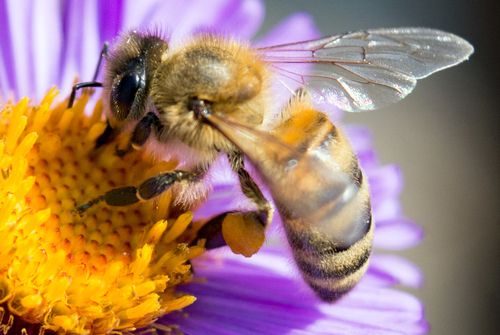 If you have a garden of your own, you are likely aware of the importance of bees. Bees and other pollinators are vital for the sustainability of ecosystems that support clean air, worldwide food production and many other essentials for human life. Your church may have started its garden to foster community or produce food for those in need, but with a little extra planning, it can also be a place that helps the local bee population thrive.
If you have a garden of your own, you are likely aware of the importance of bees. Bees and other pollinators are vital for the sustainability of ecosystems that support clean air, worldwide food production and many other essentials for human life. Your church may have started its garden to foster community or produce food for those in need, but with a little extra planning, it can also be a place that helps the local bee population thrive.
Pick Plants That Attract Bees
Any plant that produces flowers is a good source of food for bees in the area. Therefore, there are many types of plants that attract bees:
- Lavender
- Mint
- Chives
- Bee balm
- Nasturtium
- Marigolds
Flowers that feed bees invite them to pollinate your vegetables and fruit trees. When these plants are interspersed throughout your garden, the whole plot is more likely to thrive.
Arrange Your Garden for Maximum Attraction
The more flowering plants you have in the garden, the more likely it is to attract pollinators. Where you place them can also be important. If you have the space, line the whole garden with a row of flowers and flowering herbs. It's also a good idea to add a few bee-friendly varieties to the middle of the garden so that bees cross all the plants that need to be pollinated.
Help Bees Hydrate
Bees cannot live on food alone. They also are attracted to spaces that have reliable water sources. If your church is located in an area that sees regular rain and morning dew, you may see pollinators getting drinks from the water that gathers on larger leaves, such as those from melon or squash plants. When your location is in a more arid environment or your garden doesn't seem to be attracting many bees, consider installing a bird bath or some other type of small water feature. A good water source makes the garden more appealing for all kinds of beneficial visitors.
Invite a Variety of Bees
The most common bees that are likely to visit your church garden are bumblebees and honeybees. There are other types of bees that may be looking for a place that is rich with nectar and pollen. You can diversify the bee population of your garden by creating bee hotels for any solitary bees in your area. These small structures give mason bees, sweat bees, carpenter bees and other varieties a place to nest and lay their eggs.
Welcome Certain Weeds
Many gardeners see all weeds as the enemy, wrenching much-needed nutrients away from the plants they want to grow. A lot of weeds, however, such as dandelions, clover and milkweed, are alluring to bees and other pollinators. While you certainly don't want your garden to be overrun with flowering weeds, allowing a few of them to remain is an easy and clever way to invite more bees to the space.
Avoid Pesticides
It should go without saying that pesticides are toxic to bees and other beneficial insects. Many chemicals designed to maintain gardens can actually be detrimental because they repel or kill pollinators that are needed to help the garden grow. Even weed killers used on your church's lawn can drift over and taint the garden. If your church uses a professional lawn service, inquire about its standard practices to see if harmful chemicals can be avoided.
A beautiful, productive garden has many perks. It can bring a community together to work toward a common goal, and it can provide sustenance for those who may not have access to healthy food otherwise. For best results, take a few extra steps to make it attractive to bees and other pollinators. Creating a bee-friendly space can help your church's garden thrive.



